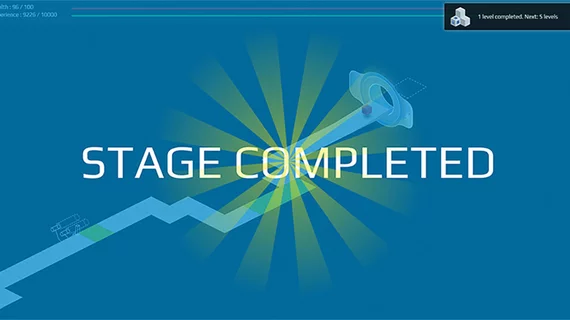An electronic learning platform that incorporates game elements can help residents become better future radiologists, according to a Jan. 16 study published in the American Journal of Roentgenology.
In fact, those who used the platform yielded fewer errors when diagnosing pneumothorax on chest x-rays and said they had more confidence diagnosing the abnormality. The concept allows young imaging experts to review various cases in one setting, an approach that has proven effective in prior research.
“In the past, scientific work has shown that the application of game elements in nongame contexts (i.e., gamification) can be an effective learning tool and motivator, especially when applied in the context of radiology education,” David J. Winkel, with University Hospital of Basel in Switzerland, and colleagues wrote.
Building off that idea, Winkel and co-investigators created a platform that married many of the classic elements of gaming, such as health/experience points and levels, with image interpretation skills central to radiology.
For example, in the first step of a level, a user is offered a tutorial on how to identify pneumothorax and then is tasked with determining whether or not the abnormality is present on a chest radiograph. Users gain 100 experience points for each correct answer and lose 20 for an incorrect guess.
After analysis, Winkel et al. found a “significant” improvement in user’s diagnostic confidence and a drop in error rate from 39% at the start of the game to 22% by the final test.
One of the key aspects of the game, according to the researchers, is the ability for readers to see a number of different case difficulties, something radiologists aren’t often afforded in clinical practice.
“In radiology, knowledge is essentially a product of the number of cases seen and the difficulty of each case read in radiologic practice,” the authors wrote. “However, the various case difficulty levels are not distributed equally in daily practice, and their occurrence is strongly influenced by chance.”
More than 120 participants were asked to complete a survey before and after finishing the game. Fifty-nine people responded to the first questionnaire. And of those, 29 replied to the post-game questions. More than 90% of the users said they would use the game for educational purposes again, and 87% indicated they had fun playing it.
Despite a limited number of participants, Winkel and colleagues believe their research may offer a way to attract “young, talented individuals” to radiology.

